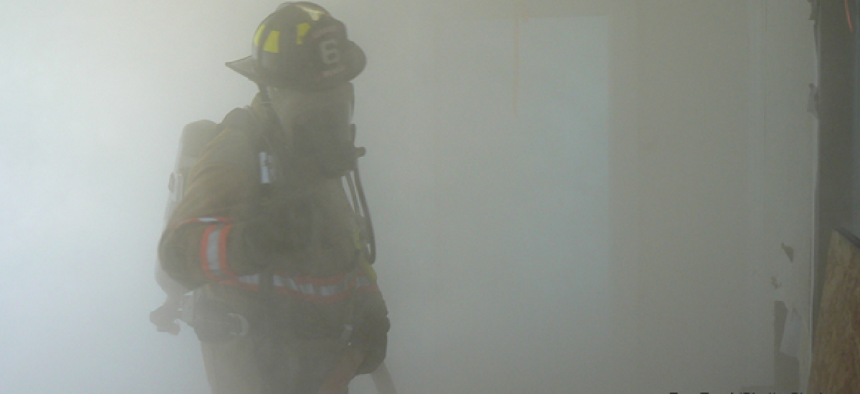Improving situational awareness for responders


Connecting state and local government leaders
The Haptic Interfaces for Public Safety Challenge generated a number of innovations that will give responders who can't see or hear when they're battling fires more information about their environment.
First responders who can't see or hear when they're battling fires may soon be able to use haptic devices to gain more situational awareness.
The National Institute of Standards and Technology’s Haptic Interfaces for Public Safety Challenge generated a number of solutions, including a first responder helmet outfitted with haptic -- or touch-controlled -- actuators and a haptic glove whose controls fit into firefighters’ jackets.
The helmet, which won in the haptic development team category, was designed by a team from Carnegie Mellon University’s Visual Intelligence Studio. It helps rescuers navigate scenes where smoke, noise and other factors prevent them from using visual and audio channels, according to an announcement from NIST's Public Safety Communication Research (PSCR) Division, which conducted the challenge between March and November 2019.
The team modified a helmet and its inner harness to fit four haptic actuators – front, back and on both sides -- and attached a control box that features a radio module and a connector for the haptic interface. The responders wear the helmet as they normally would, and the four embedded actuators vibrate to deliver relative directional signals of left, right, forward and backward in real time from a radio frequency remote control or from a virtual reality simulator via a cable.
Key features of the solution, which captured $43,500 in prize money, include its easy integration into existing gear and the ability to transfer the inner harness among helmets.
Haply, ENGR Dynamics and Team DSGN took second, third and fourth place, respectively in the development teams category.
Engineering Acoustics, which also received $43,500, won in the haptic providers category for its design of a haptic glove. Looking somewhat like a wrist brace, the fingerless glove includes two tactors – or haptic actuators – that can help with directional cues while allowing wearers to have full control and motion of their fingers and hand, according to the announcement. The glove's capabilities were integrated into a firefighter jacket, and the Bluetooth-enabled controller was stored in the inside pocket.
All of the contestants were tasked with studying the potential haptic interfaces to help first responders in VR and real-world scenarios. Judges evaluated their work based on how the prototypes affect a responder’s performance in three VR scenarios -- law enforcement, emergency medical services and fire response -- and how the prototypes, once embedded into personal protective equipment, help in realistic scenarios.
Prizes totaled $425,000 and were awarded at five phases: concept paper, teaming, demonstration of prototypes in VR, evaluation of prototypes in VR and evaluation of the firefighter navigation course. For the final phase, teams competed by remotely controlling their haptic interface prototypes worn by subject-matter experts and contest judges navigating a firefighter training course.
PSCR partnered with the First Responder Network Authority, FirstNet built with AT&T, MSA Safety, and the West Metro Fire Protection District in Colorado on the challenge.




